Balquhidder – A Highland No Man’s Land
Original source: The following article was written by the late Major John Alexander Maclaren Stewart, 14th of Ardvorlich, as a paper delivered to The Scottish Genealogy Society of Edinburgh on Feb., 16th, 1976. It was subsequently published in The Scottish Genealogist journal, Vol. XXV, No. 1, March 1978.
Copyright disclaimer: An attempt was made on 14 May 2023 to request copyright permission from http://shop.scotsgenealogy.com/ to reproduce this article in full, but to no avail. The publisher’s website is non-functional, and they appear to have been out of business since 2020. The original author of the article is deceased. Thus, we are publishing this article under what we genuinely believe to be FAIR USE as it is directly relevant to our research and is being reproduced for educational purposes only. If you are the rightful copyright holder of this article and wish to grant us formal permission to reproduce the article, or if you wish us to remove this article, please contact the host of this site.
Historicity disclaimer: Some historical claims made by the original author in this article are known to contradict more recent claims made by historians from Clan Maclaren and Clan Gregor and elsewhere. The more recent claims are preferred as more likely to be accurate. A full commentary on this article will be offered in the future.
Headings and formatting have been added to improve readability.
BALQUIDDER, A HIGHLAND “NO MAN’S LAND”
by Major John Stewart of Ardvorlich (16 Feb 1976)
Introduction
I am just a poor ignorant farmer by profession and a very part-time amateur historian. Local history has been my spare-time hobby; however, in the course of my seventy years I have picked up odd bits of information here and there, and in the course of delving into the past deeds and misdeeds of my own family have of necessity learnt much about the history of Balquhidder and Lochearnside, and what an amazingly complicated history it is!
I intend to try to trace the changes in the tribes or clans inhabiting that area, and the innumerable changes in ownership, all of which make a fascinating study to me at any rate. I do not pretend that there are not gaps in my knowledge.
Balquhidder – Land of the MacLarens
Balquhidder was from early times the land of the MacLarens; then in the 16th century it became the land of the MacLarens and Stewarts. Quite recently it became known as the land of the MacGregors owing to the wizardry of Sir Walter Scott. Perhaps, before going any further, I should explain that I may be a bit biased for, besides being a Stewart, my mother was a MacLaren!
Balquhidder Geography
I will begin by describing, for those who don’t know it, the lie of the land. Balquhidder and Lochearn lie on the very edge of the mountain mass overlooking the Lowland plain. In days gone by it was difficult of access; the only approach from the South was by the narrow and tortuous Pass of Leny and thence along the steep banks of Loch Lubnaig. From the East it could only be reached traversing the wild shores of Loch Earn. North and West it was guarded by high and difficult passes used and familiar only to those in search of a creach, and to unwelcome “broken men”. The Lowlanders looked upon their strange neighbours with fear and distrust, and had little truck with them except when they descended from their fastnesses to sell their cattle at the great Trysts of Crieff or Falkirk, or when they descended, unapostolically, to lift their cattle, goods, and gear. The officers of the Law rarely penetrated it, and when they did were glad to get out of it unscathed.
The district comprises three main areas:-
- The Braes of Balquhidder stretching practically from the Kirkton of Balquhidder to the vast hinterland reaching to the hills above Glenfalloch in the west.
- Fon Drummondich, the area comprising the present estate of Edinchip.
- The Campbell Lands of Glenogle, Glenbeich, and Glenample, the waters of these three glens flowing eastwards into Loch Earn, the Tay basin, whereas the waters of Balquhidder flow into the Forth basin.
Balquhidder in Ancient Times
In early times Balquhidder formed the westermost part of the Earldom of Strathearn created in 1115 by King Alexander I. The inhabitants, a mixture of Dalriadic Scots and native Picts were tribes which at a later date formed the Clan Laurin. They held their land under the patriarchial system, and as some measure of their importance two of their chiefs, Laurin of Ardveich and Eoan of Bathweder appear in the Ragman Roll of 1296. When the Celtic Earldom succession failed and reverted to the Crown, King David II granted it to his own nephew, who later became King Robert II who in turn conferred it upon David, his eldest son by his second marriage. For some reason which we do not know, the leaders of these native tribes either neglected to get charters for their lands or were refused them, and the tribal leaders became tenants of their landlords with no rights but the right of their swords.
MacLarens of Balquhidder and the Stewarts of Appin
(The historicity of this section is disputed by modern MacLaren researchers.)
These tribes suffered serious loss of manpower at the Battle of the Standard in 1138; in a sanguinary feud with the Buchanans of Leny about 1425; and at the Battle of Ben Doran in 1438 when fighting in support of Dugald Stewart of Appin, whose mother was a daughter of MacLaren of Ardveich. Gradually then their power and influence decreased until by the time they were known as the Clan Laurin they were confined to two tribes, the MacLarens of Balquhidder and the MacLarens of Ardveich on the North side of Lochearn.
This connection between the Stewarts of Appin and the MacLarens is particularly interesting for it led to an alliance between the two clans which persisted until 1745, in spite of the great distance between their respective countries. Neither clan called upon the other for help in vain. The Stewarts of Appin were involved in every Jacobite rising, and at their side were the MacLarens of Balquhidder.
When in 1427 King James I divested Malise, Earl of Strathearn, of his Earldom making him Earl of Menteith instead the whole area became vested in the Crown, and about 1490 William Stewart of Baldorran was appointed Royal Baillie of Balquhidder. He was a Lowlander, Baldorran being in Stirlingshire near Lennoxtown. The post corresponded somewhat to the present-day commissioner or factor, and he had a lease of the baillieship with the right to let the farms and holdings and to administer justice. (I have his sword of office in my possession to this day). I do not know by what interest or influence he got the job – maybe through his father-in-law Colin Campbell of Glenorchy.
This is the point where the changing influences in Balquhidder begin.
The Arrival of the Stewarts of Balquhidder
William Stewart and later Walter his son used their powers to settle numerous Stewart families in what was after all, MacLaren country. His sons, legitimate and illegitimate, his relations and friends, seem to have been settled in excellent holdings. In a remarkably short time, there were many Stewart families which rapidly took on the language, habits, and organisation of the Gael amongst whom they had settled. The curious feature is that this invasion seems to have been entirely peaceful. There were no massacres, no complaints, no lawsuits; intermarriages with MacLarens soon followed. The more important places leased were Glenbuckie, Gartnafueran, and Ledcreich; these were later turned into feus. Other Stewarts were settled in Glenfinglas.
This appears to have been the first invasion of strangers on a big scale. One wonders why it took place without disturbance? Was it because the weakened MacLarens were thin on the ground, or were they too peace-loving to fight for their rights, or were they led by a feeble chief?
The whole of the Lordship of Balquhidder was not under lease to William Stewart. Argyle had procured a charter of Edinample on Lochearn, and in 1511 Ross of Craigie had a charter of Auchleskine, claimed to be the homestead of the MacLaren chief.
The Invasion by Clan Gregor
(The historicity of this section is disputed by modern MacGregor researchers.)
And now we must leave Balquhidder for a moment and turn to the authors of the next invasion. The invasion by Clan Gregor. This Clan had originally occupied large stretches of land in Glenorchy and Glenstrae, but they had lost Glenorchy to Argyll who had made it over to his third son, Colin Campbell, 1st Laird of Glenorchy, in 1432. This resulted in many of the clan having to leave their ancient clan territory, and as Glenstrae was too small an area to accommodate them, they had to live outside it, dispersed under alien landlords. They spread to Rannoch, Glenlyon, Lochtayside, and Glengyle during the next century. One cannot but feel some sympathy for the clan, forced out of their homeland and having to beg shelter and land from unwilling chiefs of other clans.
According to a note made by William Stewart, my predecessor, about 1830, there were four tribes of Clan Gregor apart from the Chief’s line of Glenstrae.
- The Clan Douilcheach or “Children of the Mist” who inhabited the Glendochart area.
- The Clan Douilchiar (Dugal Kiar) of whom Glengyle.
- The Slioch Para Choilach Roro, who from the name would appear to have come from Cowal originally, and were in Glenlyon.
- The Aberachs, who appear to have come from Lochaber. Of them Glencarnaig and a good many in Balquhidder.
Early in the 1500’s there had been born in Rannoch a MacGregor called Duncan Ladarsach (Ladasach). He was not the chief, but later became tutor to Alasdair of Glenstrae who was the chief, and he led him into a labyrinth of trouble. Duncan Ladarsach was a particularly cruel, ruthless, and daring rascal, who, having gathered a party of the wilder spirits of the clan round him, terrorised the whole of Breadalbane and Strathearn. It is said that mothers in those days warned their naughty children that, if they did not behave, Duncan Ladarsach would get them!
In 1542 he turned his attention to Balquhidder, one can only suppose being well aware of the weakened condition of Clan Laurin. As is so poignantly expressed in “MacGregor’s Testament”,
“My chief and friendis then I gart convene
MacGregor’s Testament
To ane prive counsall all the gidder,
Quhilk the Clanlaurent full soir micht mene,
The cause thairof ye may well consider:
In the Passioun oulk into Balquhidder
Seven and tuentie we slew into that place
Be fyre and suorde, thai gat na uther grace.”
They occupied the holdings of their victims. A clan without a powerful chief and with no great interested superior to protect them could do little to protect them- selves.
By 1551 Duncan Ladarsach’s depredations had become so serious that James Stewart, Walter the Baillie’s son, with two Drummonds entered into a Bond of Manrent with Colin Campbell of Glenorchy, undertaking to pursue to the death with their whole power Duncan Ladarsach MacGregor, Gregor his son, and their accomplices, and a year later both were caught and beheaded by Glenorchy.
In 1558 the MacGregors struck again. One of the tribes, Clan Dulcheir (Clan Dougal Ciar), ever spreading and seeking new homesteads, came over the passes and massacred 18 householders of Clan Laurin, their wives and bairns. Again, they occupied their victim’s holdings. This seems to have been the body blow for the MacLarens, and the following year they entered into a Bond of Manrent with Glenorchy, gaining his protection in exchange for their independence. MacGregors were bad neighbours for a weakened clan.
And here we must leave Clan Laurin and Clan Gregor for a moment and pick up the thread of the Stewarts.
The Duke of Argyll Withdraws his Patronage of the Stewarts of Balquhidder
Alexander Stewart, 1st of Ardvorlich
When Walter the Baillie died in 1547 Archibald, Earl of Argyll, was granted the lands and annual rents which had pertained to him, so that James his son did not inherit the baillieship. Balquhidder appears to have come under Argyll’s domination, and he seems to have withdrawn his patronage of the Stewarts so that James’s son, Alexander, bereft of patronage, had to be content to become a tenant of Chisholm of Dundurn in Ardvorlich. I fear this meant a down-grading in social status! Sometime after 1551 Argyle sold his rights in Balquhidder to Sir Duncan Campbell of Glenorchy, and about the same time Ross of Craigie sold his lands, which included Auchleskine the MacLaren chief’s “homestead” – to David, Lord Drummond, and that area thereafter was known as Fon Drummondich.
The Murder of John Drummond of Drummonderinoch
In 1588 the Clan Gregor brought further trouble and retribution upon themselves. They murdered John Drummond of Drummondernoch, one of the King’s foresters in Glenartney. It is a well-known story and cannot be better told than in a letter written to his friend Buchanan of Auchleshie by my great-great-grandfather in 1811.
(Letter follows)
Letter from WILLIAM STEWART OF ARDVORLICH to JOHN BUCHANAN OF AUCHLESHIE. 1811.
Dear Sir,
I was favoured with yours of the 5th inst. and shall now send you as circumstantial an account as I can of the Murder of Drummondernoch relating it as I had from my Father and several others.
John Drummond of Drummondernoch, about the beginning of the seventeenth or towards the end of the sixteenth century, was Stewart Depute of Strathearn, under his cousin Lord Drummond. At that time, two or three MacGregors of a tribe in Balquhidder, called Clann Dughaill a cheathach or the Children of Dugall of the Mist (from their ancestor being an outlaw) were apprehended committing depredations upon the lands belonging to Lord Drummond, and being tried before the Stewart Depute, they were condemned and executed at Crieff. Soon after, a party of the MacGregors surprised Drummondernoch in the Forest of Glenartney, while attended but by one servant. In revenge for the execution of their kinsmen they killed him; and having cut off his head brought it down to the House of Ardvorlich.
At that time, Alexander Stewart of Ardvorlich, one of my ancestors, was married to Margaret Drummond, sister to Drummondernoch. She, her husband being absent, entertained them very hospitably. She was called out of the room on some errand, and on her return, the first object that presented itself to her, was the bloody head of her brother, placed upon the Table, the Mouth full of bread and cheese: and the miscreants in their savage humour, desired it to eat heartily for many a dinner had he eat at that Table.
The poor woman, in a state of distraction immediately burst out of the room and disappeared. Notwithstanding the diligent search that was made for her, she could not be found, so that they concluded that she had destroyed herself.
It was afterwards discovered, however, that upon hearing where her brother had been murdered, she instantly set out and never halted until she reached the fatal spot. She continued wandering through the Forest for many days in a state of absolute mental derangement.
This happened about Midsummer. At that season of the year, it was customary for all the inhabitants of the Highlands (and the practice was not discontinued until our own times) to send all their Milch Cows to pasture upon their shealings for the space of two or three months. Ardvorlich’s cattle were at that time upon one of his shealings by the side of Benvorlich, adjoining to the Forest. After spending some days in this wandering state, a glimpse of reason it was presumed had returned, and she became anxious to see her cattle. As her women were employed one evening in milking the cows, they were astonished to see her standing upon a height a little above them intently looking on. When they attempted to make up to her, she ran away and disappeared. Information was sent down to the House, and her husband, with a party of men, went up and searched in all directions, but to no purpose. Naturally concluding that she might return that evening, they concealed themselves in the heath that surrounded the shealing. She appeared as on the former night. She was taken and brought down to her own House where she gradually recovered her reason, and lived many years after.
As soon as the commission of the murder was known an express was sent to Drummond Castle acquainting Lord Drummond of it, and application being made to the King in Council, then at Stirling Castle, Letters of Fire and Sword were issued against the tribe and their abbettors.
Drummond of Invermay, a younger brother of Drummondernoch’s, and the first of that family, putting himself at the head of a strong party of men sent by Lord Drummond, and the Earl of Montrose who was likewise a relation, marched up to Ardvorlich, and being joined by Stewart of Ardvorlich and his party, they proceeded to the Braes of Balquhidder and killed it is said, no less than thirty-seven of them upon the meadow of Invernenty. James Stewart, the next Ardvorlich and nephew to Drummondernoch, afterwards apprehended twelve more of this same tribe, carried them to the East end of Lochearn, and hanged them upon a large Oak Tree. This extirpated the whole Horde.
This is a popular story well known in this Country, but like every other story handed down by tradition, interlarded with many fictions. It is asserted that the Lady lived many months in the Forest amongst the Deer, and that she and they became at last so well acquainted, and so familiar that she lay all night in the middle of them, and that they even allowed her to milk them. It is also told that the tree whereon the MacGregors were hanged, having that year carried such a luxuriant crop, never after bore a single acorn nor even leaf. The present Lord Melville made some alteration on the Public Road about eight or nine years ago to the westward of Dunira House, and in making the new line, a number of human skeletons were dug up near to the place where the Tree is supposed to have stood. It is of course conjectured they were the remains of these MacGregors.
I have been assured that there were found not long ago at Drummond Castle, some letters that passed between the Earl of Montrose and Lord Drummond regarding this transaction: in one of which the Earl declares they will take sweet revenge for the death of their cousin Drummondernoch.
A small rising ground to the westward or rather Northwest side of the hill of Uathmhore is still pointed out as the place where he was killed, and to this day retains the name of Tom lain Mhore or John More’s Mount, which I have frequently seen. A cairn was built upon the top, a part of which it is said still remains.
[End of letter]
That is not quite the whole story. When the MacGregors left Ardvorlich they made for Balquhidder. As the Privy Council Records recount:-
“Like as, after the murder committed, the authors thereof carried the said umquhile John Drummond’s head to the Laird of MacGregor, who, and the haill surname of M’Gregors, purposely convened upon the Sunday thereafter at the Kirk of Buchquhidder – where they caused the said umquhile John Drummond’s head to be presented to them, and there avowing the said murder to have been committed by their communion, council and determination, laid their hands upon the pow, and in eithnick and barbarous manner swear to defend the authors of the said murder, in maist proud contempt of our sovereign Lord and his authority, etc., etc.,”
Privy Council Records
The Decline of the MacGregors and the MacLarens in Balquhidder
Commission was granted to every nobleman and chief of clan within striking distance to search for and apprehend Alaster M’Gregor of Glenstrae and others of the said Clan Gregor and to pursue and assiege them with fire and sword.
Stewart Cattle Raids
By this time the MacLarens had sunk into relative obscurity. Even the line of their chiefs ceased to be certain. Not so the MacGregors; they, in spite of every attempt by the Government, Argyle, Glenorchy, and their many other enemies to subdue them, continued on their course of self-destruction. Meanwhile Alister Stewart in Ardvorlich had got into trouble. He and his accomplices, men of Lochearnside, Balquhidder, and Stewarts in Glenfinglas, had in 1591 carried out a successful night raid upon certain lands about Drymen. So successful had it been that a few months later they harried the same lands in broad daylight “with twa bagpipis blawand befeir thame”, and carried off a great creach of 196 head of cattle, 66 horses, and 100 sheep. Pipers will be interest- ed to note that the “twa bagpipis” were MacCrimmons living at that time on Lochearnside, and that one of them was a Patrick MacCrimmon. Alister and his merry men suffer- ed no retribution apart from being declared outlaws. As a result of all this, a year later. the Privy Council granted a Commission to Argyle to apprehend “the wicked Clan Gregor, the Stewarts of Balquhidder, and other broken men of the Hielands”. It is perhaps somewhat distressing to find the Stewarts classed with the wicked Clan Gregor, but reading between the lines I can only suppose that Alister was desperate for stock for his farms and this was the easiest way to procure it. He must have done well, for 30 years later his son was able to buy Ardvorlich from the Earl of Perth.
Murray of Tullibardine’s Lordship
In 1585 Sir John Murray of Tullibardine obtained a charter of the lands of Balquhidder from Ludovick, Duke of Lennox, so that he was superior of the whole Lord- ship excluding Fon Drummondich and the Campbell lands of Edinample and Glenveich (Glen Beich). A word about these Campbells. Ardveich known as Ardveichlonne was granted to his second son Colin by Colin Campbell of Glenorchy, 6th Laird in 1558, and Dalveich Castle was probably built by him, only to be razed to the ground in 1644 by Alasdair MacDonald (called Colkitto) inveterate enemy of all Campbells when he passed along Loch Earn on his way to rendezvous with Montrose at Blair Atholl. On the failure of Colin’s line after two generations, Edinample and Glenveich were granted by Sir Duncan Campbell of Glenorchy (called Black Duncan of the Cowl or Black Duncan of the Castles) to his fourth son Patrick in 1624. It was Sir Duncan who built Edinample Castle, a fine and picturesque fortified house with a magnificent dungeon where many a MacGregor must have languished. It was rapidly becoming a complete ruin, but salvation has come at the last minute for it has been bought by a man who intends to restore it to its original size and appearance.
Now we will drop the Campbell thread and take up the MacGregor thread again.
MacGregors and the Colquhoun Massacre
In 1603 the Clan Gregor got involved in their greatest trouble; The Field of Glenfruin. Having defeated the Colquhouns in this bloody battle, the Government decided to wipe out the Clan once and for all. The name MacGregor was to be known no more; Alasdair of Glenstrae, the chief, was hanged; no man could feed, help, or shelter a Mac- Gregor. It says a lot for their pride of race, their “esprit de corps”, and their tenacity, that the Clan survived at all, but let it be said that many men who had no cause to love them had pity on them, gave them shelter, and were heavily fined for the crime of “reset of Clan Gregor”. Amongst them was Alister Stewart of Ardvorlich, fined 500 merks, John M’Laren in Glenbeth, 200 merks, Robert M’Ean V’Laren in Balquhidder, 20 merks, John M’Laren in Ardclossan £100, Laurence his son, £40, and many others.
Balquhidder During the Civil Wars with Montrose
For the next 30 or 40 years an uneasy truce reigned in Balquhidder. There were minor raids and murders; Gilderoy the infamous freebooter was hung, there were further enactments against the wicked Clan Gregor. In the Civil War of 1644-45 both the MacLarens and MacGregors fought for Montrose, the MacLarens joined their friends the Stewarts of Appin. Strange that Clan Gregor fought for the King who had permitted such drastic laws to be passed for suppressing them, but they rightly regarded The Camp- bells as their true and greatest enemies and blamed them for dispossessing them of their lands of Glenorchy and Glenstrae, and they were adversaries of the King. I dare not suppress it, but the Stewarts of Balquhidder did not come out of it so well, but that is another story.
Viscount Stormont Lordship
In 1613 there was again a change in ownership when John, Earl of Tullibardine wadset his lands in Balquhidder to David, Lord Scone, but 30 years later Mungo, Viscount Stormont, Scone’s successor granted disposition in favour of his nephew John, Earl of Atholl, The Atholl Hunting Rolls give the names of the chief tenants and feuars in the Lordship in 1663. Ten Stewarts are named and only three McLarens. There are 7 McGregors, and it will be noted that they do not hide their identity under other names. The penal legislation against them had been repealed in 1661 after the Restoration, as some recompense for their support of the Royal cause, only to be reimposed in 1693 after Killiecrankie. There were three Fergusons. This became a common name in Balquhidder, and I have always understood that they were introduced from Atholl when the Earl got the Lordship. There were also 6 Macintyres; this too was a common name, but I do not know anything of their origin. There are other names, some no doubt followers of Clan Laurin still using their patronymics.
Rob Roy MacGregor and his Sons Stir Up Trouble
In 1671 there was born in Glengyle, Robert MacGregor Campbell, better known as Rob Roy. He was the son of Donald MacGregor of Glengyle of the tribe of Clan in the profession of cattle dealer, but he soon spread his wings and engaged in that business on a much grander scale and latterly in protection rackets further afield. His exploits are so well-known that I will pass them over, especially as they took place outwith our area. There was however one serious clash with the MacLarens in 1734. A tack of some land held by John M’Laren of Invernenty was due for renewal, and Rob Roy claimed and demanded that he should get it. Feeling ran high, and a challenge was issued to settle the matter with the sword. Clan Gregor mustered for the fight, and the MacLarens sent word to Appin to come to their aid.
On the appointed day the MacGregors, finding themselves outnumbered suggested that the matter should be settled by single combat knowing full well that Rob Roy was an expert swordsman with a remarkably long reach which gave him great advantage. Alexander Stewart of Invernahyle in Appin, a much younger man and able swordsman was chosen to confront him. It was a long and fierce fight but at last the younger man penetrated the tiring Rob Roy’s guard, wounded him, and ended the fight. Rob Roy died shortly after at Inverlochlarig Beg whether as a result of the fight or not I would not know. Amongst those who attended his wake and funeral was my great-great-grand- father, Robert Stewart. I wish I knew what he thought about it!
If Rob Roy did not stir up that much trouble, his rascally sons certainly did! Two years later the last clan murder in Balquhidder took place. Rob Roy’s sons had never forgiven the MacLarens for getting the better of them when their father tried to wrest Invernenty from John MacLaren. At the instigation of his brothers, Robin Oig, the youngest, approached MacLaren when he was peacefully ploughing one of his fields. MacLaren saw him and said “What is that snake wanting here to-day? At that moment Robin Oig fired and the poor man fell mortally wounded. The MacGregors then haughed or killed 30 head of cattle belonging to the MacLarens. Robert Stewart of Appin advertised that he would pay £50 for the capture of the murderer. In another advertisement offering £20 for his apprehension Robin Oig is described as “a tall lad, aged about 20, thin, pale coloured, squint eyed, brown hair, pock-marked, ill legged, in-kneed, and broad-footed. Robin was no beauty! He disappeared and was next heard of in the ranks of the 42nd at Fontenoy, but justice caught up with him at last and he was executed but for other crimes, in 1754.
Balquhidder and the Jacobite Risings
In 1745 William, Jacobite Duke of Atholl, issued a Warrant to Alexander Stewart of Glenbuckie and Robert MacGregor of Glencarnaig to raise his Balquhidder vassals and tenants for the Prince. Most of the MacLarens fought with the Appin Regiment. The Clan Gregor formed a regiment commanded by Glencarnaig. This was a property which his father had feued from the Duke of Atholl in 1727, and was sold by creditors in 1746. This was the only land ever owned by the MacGregors in Balquhidder to that date. The Stewarts fought, some in the Atholl Brigade, some in the Duke of Perth’s Regiment, but when Alexander Stewart of Glenbuckie was found murdered at Leny, many of his followers returned home.
That brings us to the end of the Clan period, though Balquhidder did not escape the dreadful consequences of the failure of the rising.
The End of the Clan Period
The Rolls of the Strathearn and Balquhidder Volunteers in 1798 show 45 Stewarts; 45 MacLarens; 37 Fergusons; 24 MacGregors, and 22 Macintyres enrolled in the Balquhidder, Lochearnhead, and Ardvorlich Companies. That was before the changes wrought by the industrial and agricultural revolutions had taken much effect. Many of the Balquhidder men were settled on Blair Drummond Moss which Lord Kames reclaimed early in the 1800’s.
In Balquhidder to-day there are only one or two resident MacLarens, though a MacLaren was recognised as Chief by the Lord Lyon a few years ago, and purchased a foot-hold in the MacLaren country.
The Restoration of Clan Gregor
In 1774 all the penal statutes against the Clan Gregor were repealed, and Colonel John MacGregor Murray, nephew of Robert of Glencarnaig and a descendant of Duncan Ladarsach, was elected chief of the clan about 1787. Colonel Murray, later Sir John Murray MacGregor, purchased the estate of Edinchip from the last of the Campbells of Edinchip and the superiority of the Lordship of Balquhidder from the Duke of Atholl, and the present Chief’s seat is there to this day.
There are still a few Stewarts about; my own family and a few others, but they are thin on the ground. Curiously enough the Fergusons seem to have stood the strain better than the other clans which were once so numerous. There are still several families in Balquhidder. Whether they were better at keeping out of trouble, or more tenacious, or were better businessmen, I don’t know.
The Importance of Landlords and Deeds
I would like to tell you what has struck me most forcibly during the preparation of this paper.
Firstly, the paramount importance to a clan of possessing some form of Charter or Land ownership once the Patriarchial System was replaced by the Feudal System. The MacLarens seem to me to be a classic example of a clan, latterly small and weak and possibly with ineffective chiefs, doomed to near extinction through lack of them. The Clan Gregor is perhaps another example, yet in ways the exception. For though landless and nameless and hounded they never surrendered their pride of race, their “esprit de corps”, and they were led by fearless chiefs.
Secondly, In Balquhidder there was no continuity of superiors, and the superiors were nearly always remote from their Lordship. Strathearn, the Crown, Argyll, Glenorchy. Lennox, Tullibardine, Scone, Atholl. This meant that they had little interest in their far-off domain. Perhaps they suffered from a malaise common enough to-day; they didn’t want to become involved and so let feuds and massacres run their course.
Thirdly, the depressing conclusion that all the crimes, murders, and massacres perpetrated by or on our ancestors were in no way more cruel or vicious than those being perpetrated in Northern Ireland every day.
Closing
I would like to take this opportunity of mentioning the interesting and important work which has been undertaken in Balquhidder by a Mr. Robert Stewart (sic, James Stewart), a student. at Newcastle University. He has spent the last two summers identifying and plotting the situations of the many farms, homesteads, and clachans, which are now ruins or mere ruckles of stones; even the names have almost been forgotten. Some are in ground planted by the Forestry Commission, and are in danger of being lost for ever. I have seen his plans the lay-out which are detailed and to scale, and one can learn much about the inhabitants by studying the size and lay-out of these farms and clachans. It seems to the that it is a study which could be carried out with advantage in other districts while there is yet time. (see Dr. James Stewart, The Settlements of Western Perthshire)
Maj. John Stewart of Ardvorlich

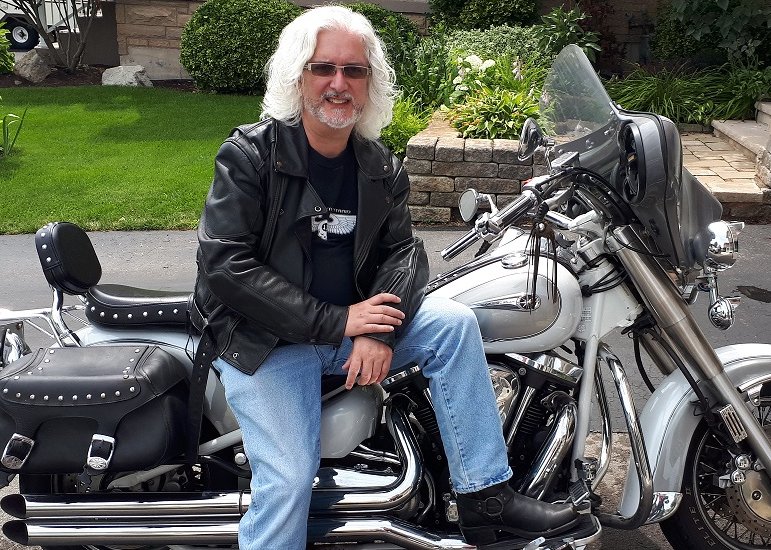
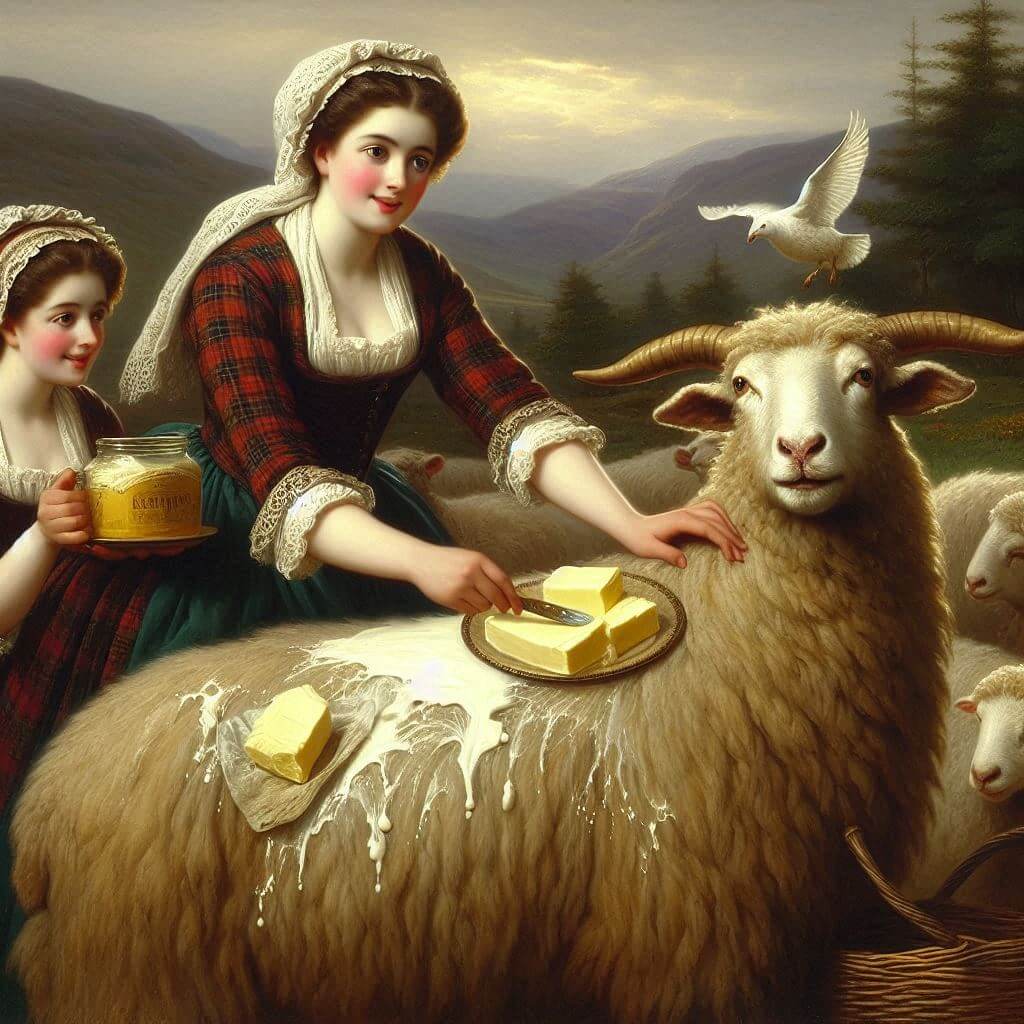
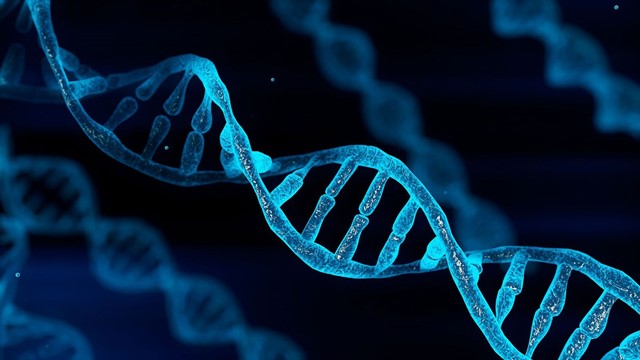
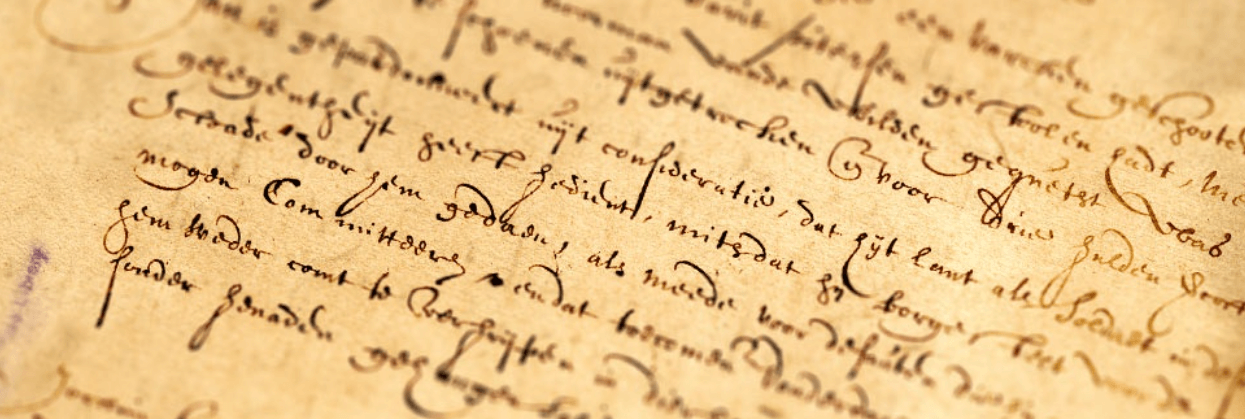
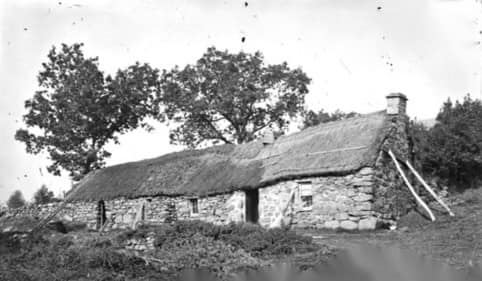
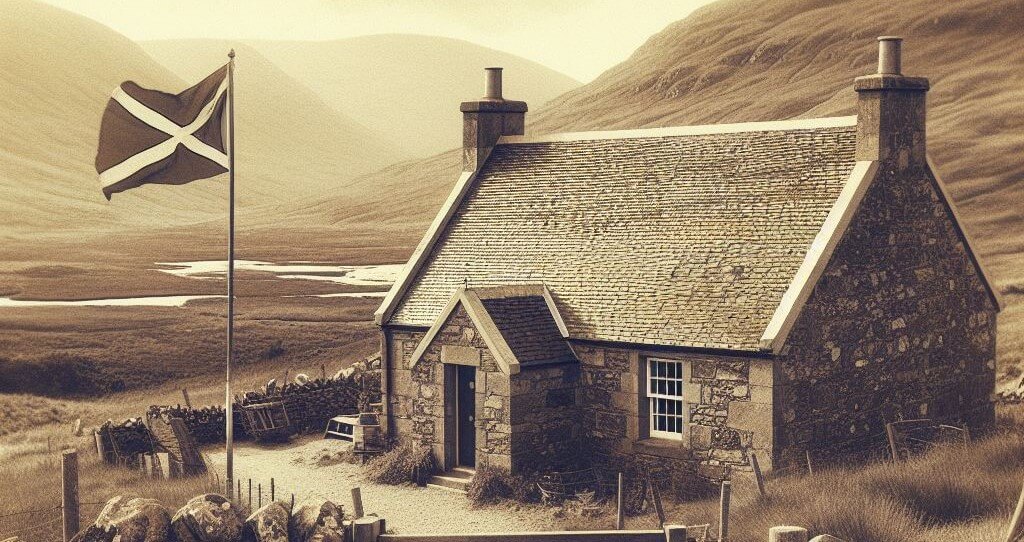
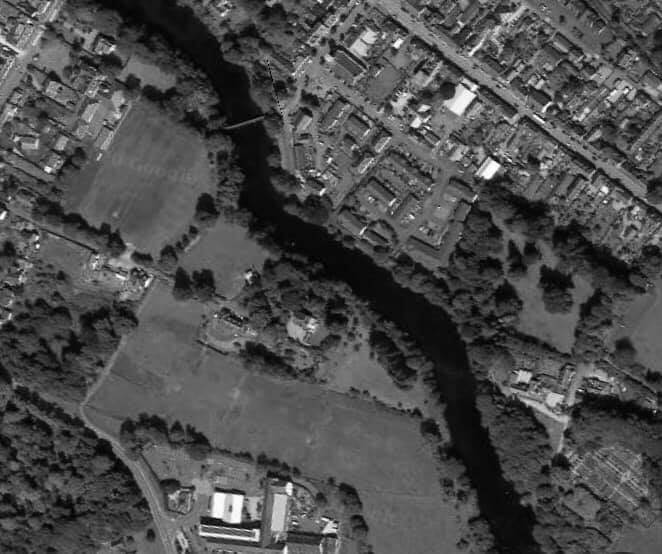
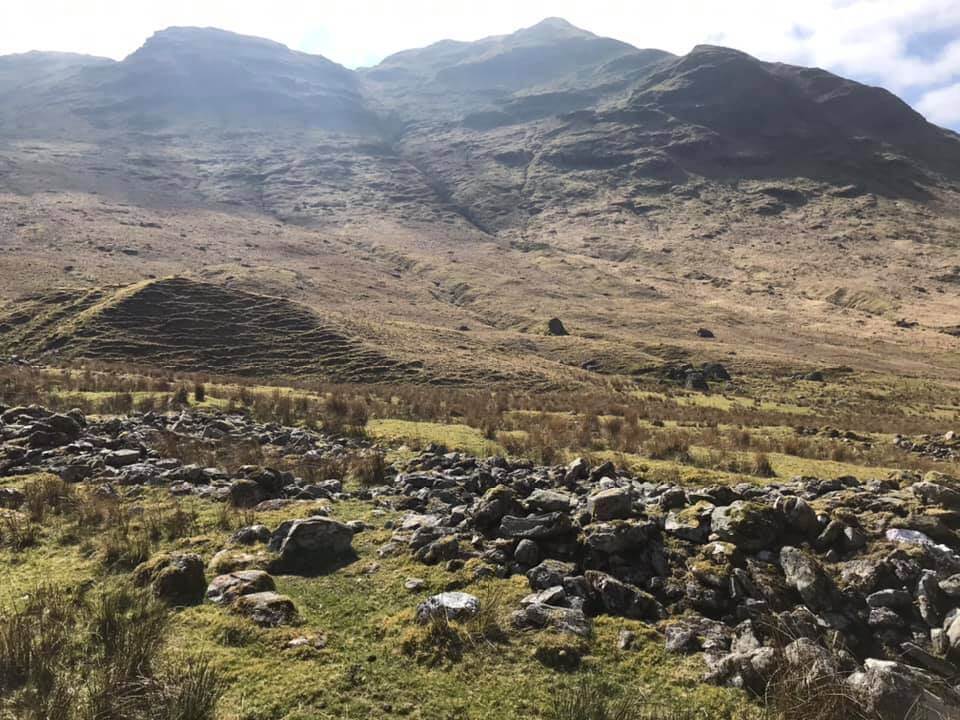
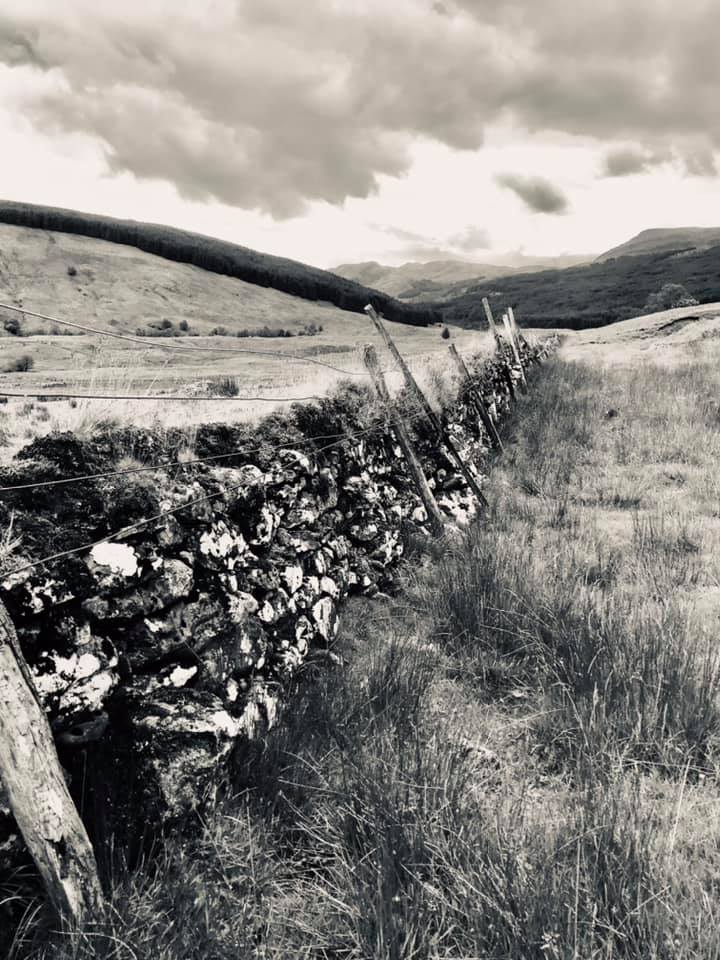
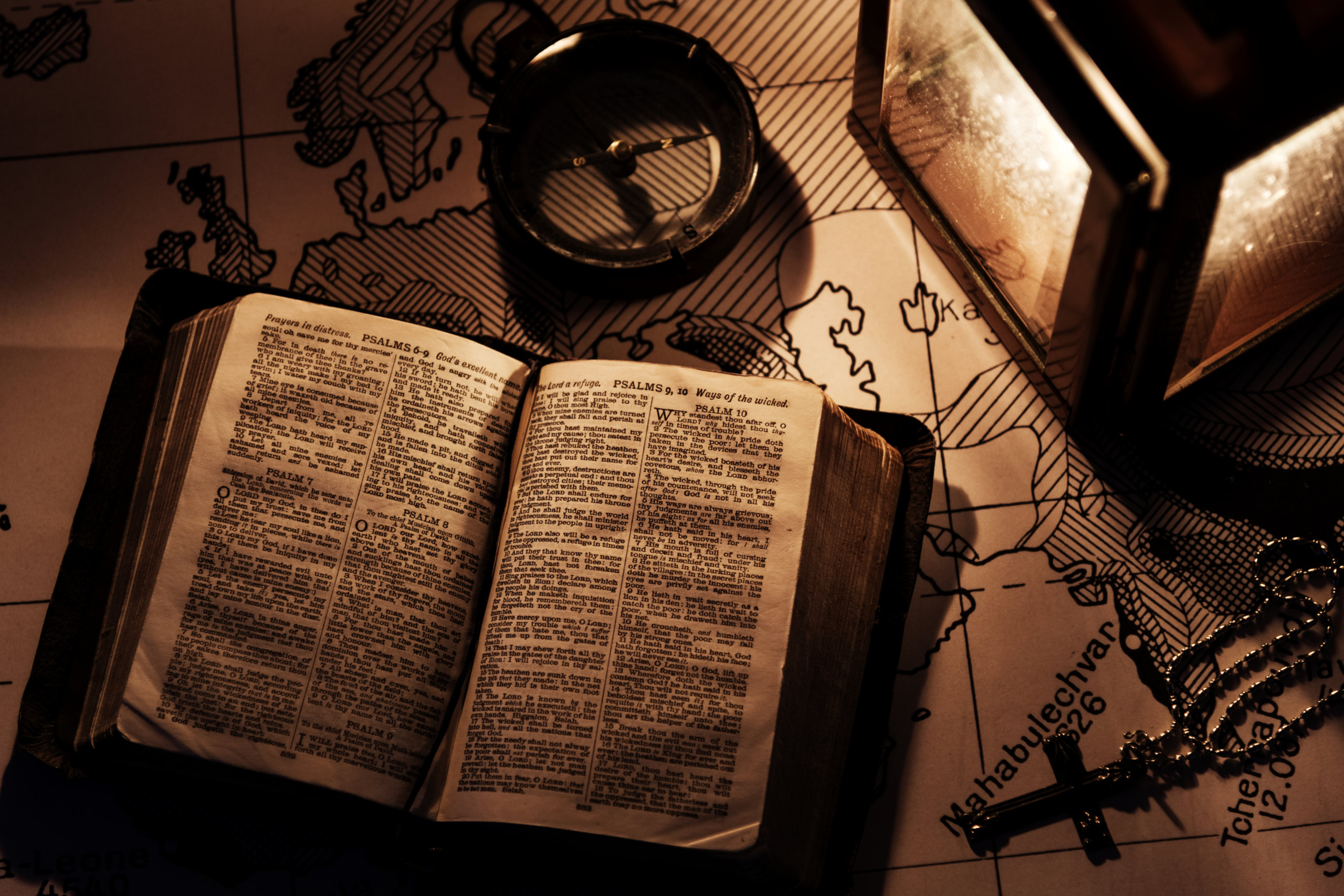
0 Comments